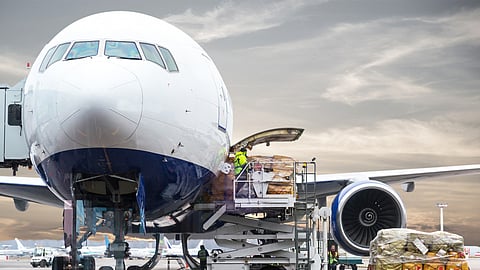Middle East Air Cargo Carriers' October Volumes See 9.4% Y-o-Y Rise
Middle East carriers experienced a 9.4% rise in international cargo volumes in October 2021 versus October 2019, a significant drop in performance compared to the previous month (18.4%), according to figures release by the International Air Transport Association (IATA).
This was due to a deterioration in traffic on several key routes such as Middle East-Asia, and Middle East-North America. International capacity was down 8.6% compared to October 2019, a decrease compared to the previous month (4%).
Meanwhile, global demand was up 9.4% compared to October 2019 (10.4% for international operations).
Capacity constraints have eased slightly but remain 7.2% below pre-COVID-19 levels (October 2019) (-8.0% for international operations).
Economic conditions continue to support air cargo growth but are slightly weaker than in the previous months.
Willie Walsh, IATA’s Director General said: “October data reflected an overall positive outlook for air cargo. Supply chain congestion continued to push manufacturers towards the speed of air cargo. Demand was up 9.4% in October compared to pre-crisis levels.
Future of Logistics Session Offers Vision of Air Cargo Best Practices
"And capacity constraints were slowly resolving as more passenger travel meant more belly capacity for air cargo. The impact of government reactions to the Omicron variant is a concern. If it dampens travel demand, capacity issues will become more acute.
"After almost two years of COVID-19, governments have the experience and tools to make better data-driven decisions than the mostly knee-jerk reactions to restrict travel that we have seen to date.
"Restrictions will not stop the spread of Omicron. Along with urgently reversing these policy mistakes, the focus of governments should be squarely on ensuring the integrity of supply chains and increasing the distribution of vaccines.”
Read More: Middle East Carriers' Air Cargo Volumes Up 17.6% in September 2021


